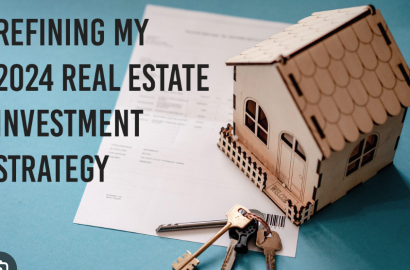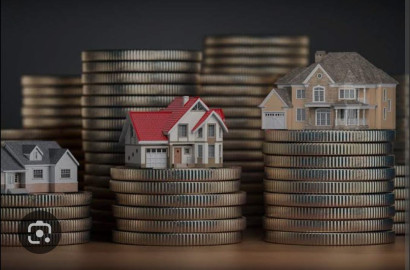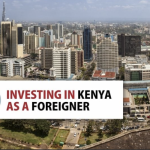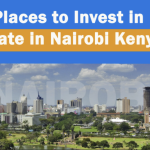The majority of people's ideal future involves being homeowners. But it comes at a cost. Mortgages are the most prevalent way to purchase a home worldwide, even when other real estate finance choices are available. However, Kenyans continue to be cautious of mortgages, and the uptake of mortgages in Kenya is still nothing to write about.
As an illustration, take into consideration the following statistics:
In 2012, Kenya's overall mortgage portfolio consisted of only 19,177 loans, and although it has been gradually increasing, the gap between then and now is insignificant. According to the Bank Supervision Annual Report 2017, published by the Central Bank of Kenya in December 2017, the market had 26,187 mortgage loans as of that month. This equated to Ksh.223.2 billion in mortgage loan assets, which is equivalent to 2.7% of the country's total gross domestic product.
The delayed adoption of mortgages in Kenya can be attributed, in part, to the fact that this financing choice is best suited for salaried individuals, is contingent on a review of the applicant's credit score, and also depends on the applicant's capacity to make a sizeable down payment.
However, even if you are approved for a mortgage, how does this form of financing stack up against the various alternative options available for buying real estate?
Mortgage Projections are hidden behind the Table of Contents.
Alternate Methods of Financial Provision
1. Construction Loans
2. Obtaining loans from SACCOs; 3. Using crowdsourcing platforms
4. Investment Groups that Have the Support of Financial Institutions
5. Tenant Purchase Scheme and Rent-to-Own Program
6. Projection of Cash Flow from Mortgages
Unlike other borrowing types, mortgages offer several benefits, including manageable monthly payments and competitive interest rates. This is especially the case given that your property will be used as collateral for the loan. The substantial down payment, typically equivalent to 25 per cent of the property's value and is required in the Kenyan market, is one of the market's drawbacks.
Even though some people may qualify for a mortgage, it is out of reach for most people due to their limited financial resources. For example, if you took out a mortgage loan from Standard Chartered Bank for Ksh 15 million over 25 years with an interest rate of 12.5% per month, you would be required to pay at least Ksh 163,500 every month. This would include payments for insurance, tax, and legal fees.
If you paid 25% of the total deposit, the total monthly payment would be around Ksh 122,000 less. As a result, it is advisable to save sufficient funds for a down payment, which can then be used as equity for the home. This lowers your monthly responsibilities, giving you more room in your budget for savings toward other goals. You also have the option to make payments in a more expedited manner, which will bring the total cost of the loan down.
Although this choice may appear to be pricey given that the total amount you will have repaid at the end of the 25 years will be more than twice the principal amount, it is still a workable alternative because it allows you to keep your short-term financial flexibility, which in turn makes it easier for you to put your money into other opportunities.
If a borrower falls behind on their mortgage payments, the lender has the legal right to foreclose on the property. This is the most significant drawback associated with mortgages. This is something that typically occurs to salaried employees, and it can create a great deal of disruption and even anguish to families.
There is also no easy way to acquire a mortgage loan in order to purchase the home of one's dreams. The use of only qualified and certified specialists, such as architects, constructors, and engineers, is required by the lending institutions as part of their insistence on following the correct procedures.
Alternate Methods of Financial Provision
mortgage finance kenya
1. Construction Loans
If obtaining a mortgage is not an option, you may want to consider applying for a loan to cover the cost of building your dream home instead. However, because these loans are viewed as riskier, the interest rates that are attached to them are higher, making them more attractive to landowners in terms of the financial commitments that must be met. The money from the loan is given to the people or contractors who are in charge of managing the project, and the repayment is broken up into stages according to how far along the building process we are.
The maximum financing available from the country's banks for the purchase of land is 60%, while the maximum financing available for building is 70%. However, some financial institutions, such as ABSA Bank, will finance the entire cost of purchasing and constructing a home if you already own the property on which it will be built. In addition, a down payment ranging from 20 to 25 percent of the total price is required.
In most cases, the organization providing funding for your project will demand that you begin making repayments on loan during the building phase. However, you will not be required to repay the principal until the project is finished. As a result, it is essential to reduce the time required for construction to avoid incurring higher loan expenses.
2. Taking out loans from SACCOs
According to an estimate by the World Bank in the middle of 2019, Savings and Credit Cooperatives (SACCOs) offer around 90 per cent of all housing credit in Kenya. The vast majority of them have fixed interest rates which are lower than 12%. However, to be eligible, you need to be a member of the registered SACCO and have kept your savings there for a minimum of half a year.
SACCO loans allow borrowers to borrow up to three times the amount of their savings balance. There is a possibility that the terms of repayment could extend out to seven years. Even though this choice is appealing, you will need at least Ksh 1.5 million stashed away in a SACCO account to put it into action. The project in question will cost Ksh 4.5 million. The accumulation of such savings takes time. Therefore a word of advice to the wise is to begin saving as soon as possible.
3. Fundraising via Crowd
There has never been a shortage of Harambee spirit among Kenya's population. If you and the other members of your Chama want to buy or build a house that costs 12 million, you and the other members of your Chama can donate money to the project over a specified amount of time. If your group, for example, has 50 members, then to reach the goal in one year, each member will need to give Ksh 20,000 per month. You can also finance a home purchase by getting together with a few other people and pooling your resources into a single pot.
On the other hand, there is the possibility that members will not be prepared to donate in large quantities, and the completion of the project may take years. There is also the possibility that the target amount will not be reached; if this occurs, you will be required to give the members their money back, and there is also the possibility that the projects will not be successful, which could lead to the dissolution of the group or the tarnishing of its reputation.
4. Investment Groups Supported by a Network of Financial Institutions
Additionally, banks will create Chamas, organizations in which they would ask individuals to join as members and contribute monthly. You can borrow money from the members at a predetermined interest rate if you want to construct a house or buy land. For example, KCB Bank's Chama Loan program offers interest rates of 13% on loans of up to 10 times the amount of savings accumulated in a Chama account.
However, the group as a corporate body has access to these loans; however, an individual member may also borrow money and use the support of the other group members as guarantors. There is a possibility of a repayment duration that extends beyond 6 years.
5. Tenant Purchase Scheme and Rent-to-Own Program
One leases a house as part of a tenant purchase arrangement, and the rent payment is subdivided so that part of it goes toward the agreed-upon down payment and the remaining part covers the cost of actually living in the house. In most cases, the prices reflect the current market value, except any tenant-performed renovations. The buyer pays a deposit, and the amount is typically between 10 and 20 percent of the total purchase price. The time allotted for making payments can go up to twenty years.
In Kenya, housing is typically developed by parastatals and private real estate companies, which are then rented out to homebuyers under a purchase option. The buyers put down a deposit, then pay off the rest of the purchase price with the rent they have accrued or received.
6. Cash
If you can do so, you can purchase your dream home with cash. If you have a substantial amount of cash, selecting this alternative is the more convenient choice because you won't be required to make regular payments toward settling a debt. Similarly, you won't have to shell out a significant amount of money each month for the interest on an amortized mortgage. Even better, unlike the case with mortgage payments, one does not have to be concerned about their property being put up for auction if they fail to make payments on time. That's something to put a grin on your face about.
Even so, purchasing cash might look like the ideal choice, but credit cards have advantages. To start, you can only spend the amount of money readily available to you in cash. That is to say, and if you come across a house that costs Ksh 20 million but only has half of that amount, the only option is to continue living without the house.
Investing in adequate savings will help you avoid ending up in a situation where you have too much space but not enough money. Investing in inadequate savings will help you avoid ending up in a situation where you have too much space but not enough money to cover your expenses for an extended period. It is important to remember that the value of the land you plan to build on may have increased by the time you have saved up the necessary funds if you want to buy land in the future and construct it.
Mezzanine financing, timeshares, refinancing, a moratorium on development loans, and using companies that offer services with "no deposit" necessitate entering into a contractual agreement with the company, which allows you to pay for the house monthly. In contrast, the company builds you a home. These are some of the additional financing options that a person may investigate.
Related posts:
Real estate investments can be profitable if done correctly. Here are some tips to help you make the most of your investment: 1. **Understand the market**: Understanding the real estate market is crucial to making informed decisions. Research the market...
Potential benefits of investing in real estate in 2024: Hedge against inflation: Real estate, particularly tangible assets like land and buildings, is historically considered a hedge against inflation. As the cost of living rises, so can the value of your...


 How to make real-estate investments profitable in 2024(SURE TIPS!)
How to make real-estate investments profitable in 2024(SURE TIPS!)
 Why you should invest in real-estate in 2024
Why you should invest in real-estate in 2024
 5 Things to know as a foreigner before investing in real estate in Kenya
5 Things to know as a foreigner before investing in real estate in Kenya
 Best areas for real estate investment Nairobi
Best areas for real estate investment Nairobi
 Advanced Cons in Real Estate to Watch Out For In KENYA
Advanced Cons in Real Estate to Watch Out For In KENYA